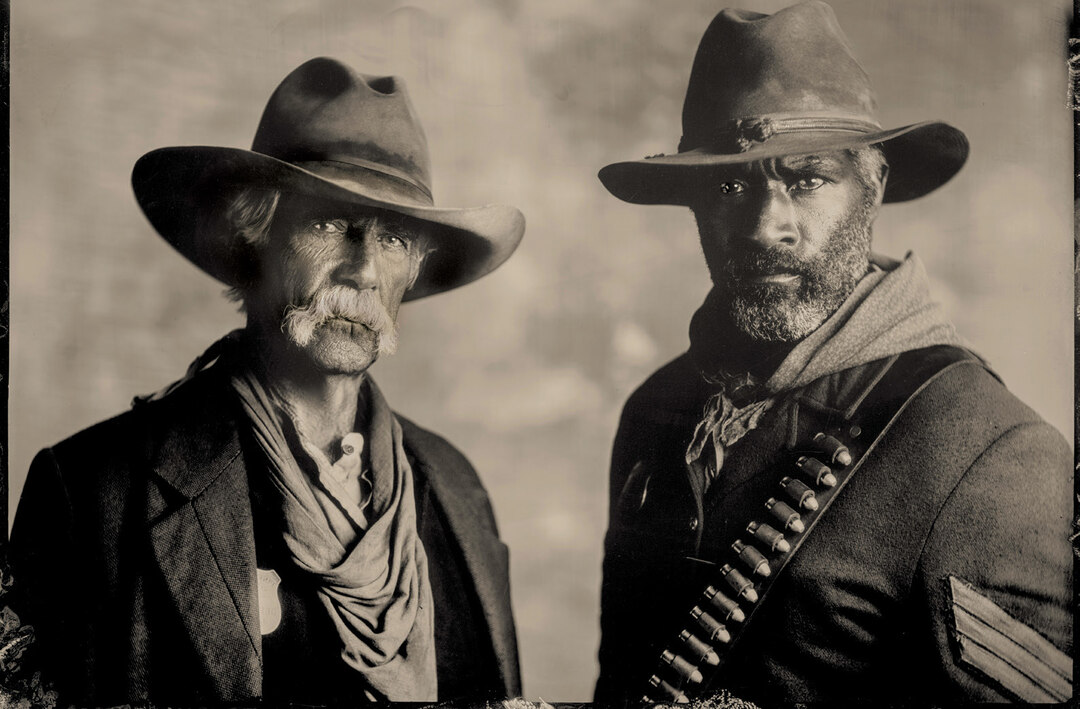Thomas, played by LaMonica Garrett, is the only Black cowboy on the expedition, and the N-word is never used in the entire series. The lone Black passenger on board is Garrett’s character, a former buffalo soldier who acts as the right hand to the wagon master Shea (Sam Elliott). The precursor to Yellowstone, 1883, tells the tale of the Dutton family’s acquisition of the property that would become the Yellowstone Ranch. While working on the project was a dream come true for Garrett, getting to collaborate with established professionals was the cherry on top.
“First, you’re working with Sam Elliott, he’s a Hollywood icon, you have those nerves going, then you read, and you’re like, “Oh, Tim McGraw, Faith Hill, Billy Bob Thornton’s going to be [in the series as well]…” Like it just keeps getting bigger and bigger. Then you meet all these people and it’s like, “Wait a minute,” then you start working with them,” he recalled when speaking to us about his time on set. “And we had a chance, a unique chance for a few weeks before filming during cowboy camp to really get to know each other, to hang out day in and day out. We were away from our families, we were away from our homes. It was just us”

Because of the amount of time spent together, he says they quickly grew interconnected with one another. It made the filming process that much more enjoyable for him. “We all built this tight-knit bond together, and it rolled right into filming, from the last day of cowboy camp to the first day of filming. And from that point on, for the next four or five months, we were all we saw. We would have lunch together, we would have dinner together,” he noted.
“If I’m going into town to get to the grocery store, like, “Hey, you guys, hey, I’m rolling.” Tim’s like, “All right, I’ll jump in the car with you.” Or Gratiela (Brancusi) or Sam, “Hey, get me this and get me that.” It’s like we were all we had, so there’s no way but to create this bond, this family environment, and that’s like Taylor Sheridan, he’s the reason for that. He knows how close you’re going to become from that, and we benefited from it.
Aside from building close relationships with his co-stars, Garrett’s favorite part of the project was something missing from the script entirely. He explained to us how intrigued he was to get his hands on a project dealing with matters of race in westerns that omitted slurs such as the N-word. It made him even more excited to play Thomas. As a lifelong fan of westerns, he explained why the word is nowhere to be found in the dialogue.
“The history of Black cowboys, there was a thing called range equality, and it was still racism back then, it was still prejudice, it was you’re in the 1800s, you’re a Black man, it was post-Civil War, but there was a thing amongst cowboys that there was more equality,” he said.
He continued: “It wasn’t equal, but there was more equality amongst cowboys back then. And you talk to some of the Black cowboys in the rodeos and from the time, they would talk about the racism they experienced wasn’t as much with the cowboys, it was with the cities that you went to and the crowds, the people in the town. But the cowboys, it was man against beast. So if you could handle yourself in the field, that’s what your worth was based on, not so much color.”
